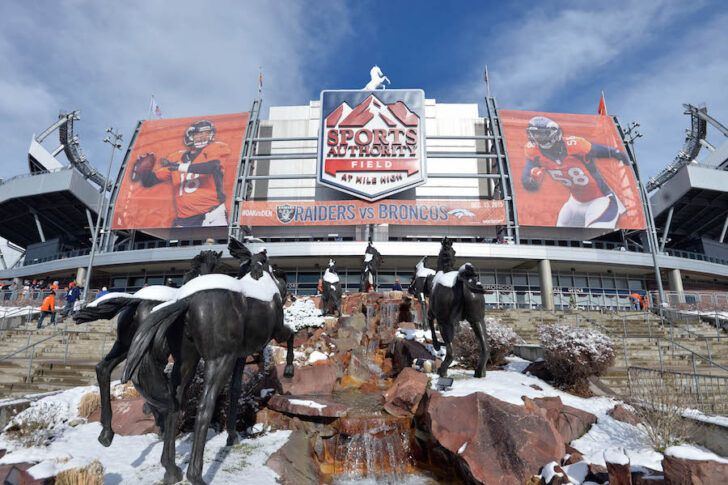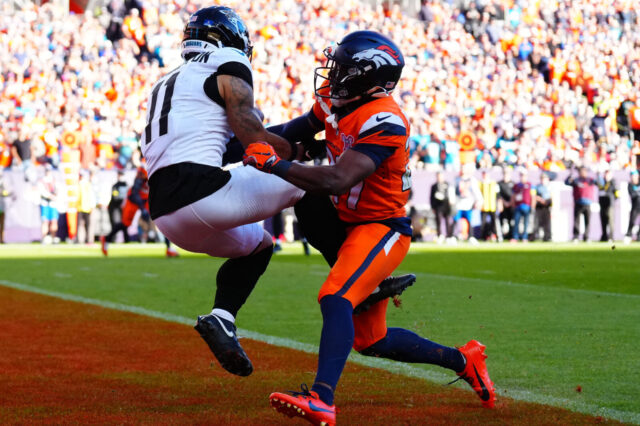Thursday, the Broncos can make an announcement that will energize their fan base. But it won’t have anything to do with who the team selects in the first round of the 2016 NFL Draft, a trade for Colin Kaepernick or any other wheeling and dealing that John Elway might be up to as he assembles the 2016 roster.
Rather, the franchise can earn some goodwill by correcting a wrong. They can put a check in the PR win column by fixing a mistake that has been 15 years in the making.
It’s time to announce that the home of the Broncos will once again be known as Mile High Stadium.
Since the building opened in 2001, that’s what most people have called Denver’s football facility anyway; some have done it out of protest, while others have had it happened out of habit. Now, the team just needs to make it official. The era of slapping a corporate sponsor on the side of the building has come and gone; it’s time to give the fans what they want.
It’s not as though the Broncos haven’t had a chance to have it their way. In fact, they’ve had two opportunities to force an albatross of a name down everyone’s throat. But with the announcement on Tuesday that Sports Authority was shutting its doors for good, the team is now 0-for-2 when it comes to finding a company worthy of being the title sponsor of Denver’s unofficial sports cathedral; Invesco surrendered their rights in 2011 when the company was on the brink of collapse. Pepsi and Coors they were not.
Enough is enough. There’s no reason to go down this path again; eventually, continually having to change the name of a stadium becomes an embarrassment. That kind of thing might fly in Nashville, where the home of the Titans has been under the guise of Adelphia, LP and now Nashville since the turn of the century, but Colorado isn’t Tennessee; there’s tradition and pride at stake when it comes to the Broncos.
This isn’t a new thought. After all, a coalition led by now-governor John Hickenlooper tried to keep the Mile High Stadium moniker back in the early 2000s. Their well-intended efforts failed, however, as the chance to grab some easy cash eventually won out; the $6 million per year price for naming rights, which was essentially free money, was too hard to turn down.
At the time, that made more sense. After all, that cash made a bigger impact on the Broncos bottom line 15 years ago. Back then, the team was getting around $68 million per season as part of their TV deal; today, that number is roughly $220 million.
All told, the franchise had a reported $346 million in revenue last year; that means the stadium deal accounts for less than two percent of the team’s annual income. Asking the Broncos to walk away from the naming-rights deal is a lot more reasonable in 2016 than it was in 2001.
Granted, it’s easy to spend someone else’s money. And admittedly, it’s a bit hypocritical for a writer who depends on sponsorship dollars for a living to throw stones at another entity for accepting that income. But the situations are apples and oranges.
In the media world, the only real source of income is advertising. For the Broncos, it’s a blip on their balance sheet; they make their money off of television rights, merchandise, ticket sales and other revenue streams. Sponsorship is a fraction of the total.
Furthermore, the team could make up the $6 million in a number of ways. They probably started down that path when they sold the naming rights to their new training complex, a facility they funded on their own, to UCHealth. Finding things the franchise owns and controls that will be attractive to potential sponsors won’t be difficult.
The Broncos, as well as the Metro Denver Stadium Commission, will argue that they need to use the naming-rights dollars to make improvements to the stadium. While that makes for a palatable sound bite, it’s hard not to call BS on the claim; after all, the franchise has used the same line when announcing ticket-price increases in the past. It’s become the convenient excuse for unpopular moves, spinning money grabs as a reinvestment in something that the fans use; the problem is that it’s used too often to be entirely true.
When the Broncos were looking to build a new stadium, they asked taxpayers to pony up and pay 75 percent of the tab; those funds came via an extension of the Coors Field sales tax, which was approved by voters. It seems only fair that those same people should have a voice in what the facility, which they paid a majority of the cost to build, should be called.
People in the seven-county area cobbled together $300 million, plus interest, to pay for their portion of the stadium. They didn’t skip out on their responsibility, something that can’t be said for Invesco or Sports Authority. So it’s time their voice is heard.
There should be a big announcement today in Denver: The Broncos should be playing at Mile High Stadium in 2016.



